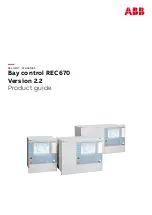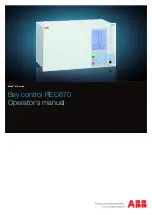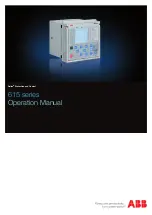
Page 31
If supervised radio detectors are used, the receiver will be seeing regular transmissions. Because of this, the
panel can monitor receiver activity to check that the receiver is still working. If the panel does not receive any
signals within this time period a receiver failure alarm will be generated. If set to 0, the receiver monitoring will be
turned off.
UPLOAD/DOWNLOAD SITE CODE NUMBER
UPLOAD/DOWNLOAD SITE CODE NUMBER -
P25E 8E (8 characters)
The upload/download site code number provides a security access level to the panel when accessed externally.
The number can be up to 8 characters in length. Valid characters for this number are 0-9,B-F. See chart on page
55 for details of how to program the characters B-F.
TEMPORARY OUTPUT DISABLE
TEMPORARY OUTPUT DISABLE
- P25E 9E (Select output # 01-32)
This address allows a technician to select any output/s to be temporarily disabled for one alarm or armed cycle,
eg by selecting P25E 01 02 03 04E (Outputs 1-4) at this location then leaving program mode, outputs 1-4 will not
turn on following any alarms. The technician is now free to arm the system to test all monitoring signals without
having any internal and/or external alarms activating. When the alarm is reset or disarmed all outputs will now
work normally again.
MISCELLANEOUS PANEL OPTIONS
MISCELLANEOUS PANEL OPTIONS
- P25E 10E
Option 1 - Panel Tamper is 2k2 EOL
Option 2 - Direct access to program mode for the Installer Code
Option 3 - Disable Mains Fail Test
Option 4 - Globally reset trouble alarms
Option 5 - Cannot arm the alarm if Receiver fail mode is active
Option 6 - Enable iPSU AC and Battery Low monitoring
Option 7 - Cannot arm if the system battery is low.
Option 8 - Installer Lockout
Option 1
Panel Tamper is 2k2 EOL
- The Tamper input (Tmp) on the control panel requires either a short
circuit or a 2k2 End-of-Line resistor. If option 1 is on the panel must see a 2k2 resistor (EOL) across
the Tmp & 0V terminals to ensure the tamper is sealed. If this option is turned off then a simple short
circuit is all that is required to seal the panel tamper.
Option 2
Direct access to program mode for the Installer Code
- If this option is on, the Installer Code can
gain access to Installer Program Mode directly. If the option is turned off, the installer can only gain
access to Installer Program Mode via Client Program Mode. This option allows the owner to control
program mode access by the installer. The User must have option 3 at location P5E turned on for
them to allow installer access.
Option 3
Disable Mains Fail Test -
If the panel must be run off a DC supply or the Mains supply can fail
regularly, this option disables the mains voltage monitoring to prevent mains fail alarms from
occurring.
Option 4
Globally reset trouble alarms -
If this option is OFF and trouble alarms are created in multiple areas
a valid user can only reset the trouble alarms in their associated areas. If this option is ON a valid
user can reset all trouble alarms. Users can be excluded from this by turning on option 1 at P6E.
Option 5
Cannot arm the alarm if Receiver fail mode is active -
If the receiver fail delay (P25E7E) is set to
a value other than 0 and the panel sees no activity from the receiver for the set period of time, a
receiver fail alarm will be generated. If this option is turned on, the panel cannot be armed until the
cause of the receiver failure has been resolved. Also if the receiver detects a continuous signal for
longer than 60 seconds it will send an RF Jammed signal to the control panel. Under this alarm
condition and if this option is turned on, the control panel cannot be armed until the interference has
been removed.
Option 6
Enable iPSU AC and Battery Low monitoring -
If an optional power supply (iPSU) is fitted to any of
the zone or output expanders they can monitor the AC fail and battery low conditions. If this option is
turned off the panel will ignore any AC fail of battery low signals from an iPSU. If turned on the fault
















































